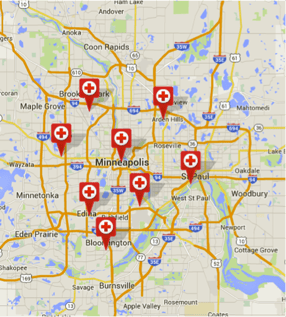Saving Lives: January is National Blood Donor Month
Shelli Bakken | Jan 14, 2016
People generally want to make a difference in the lives of others and make an impact where they can. Coming up with those philanthropic ideas isn’t always easy, however. If you’ve wondered how you can make a difference in the lives of others, rest easy - there is a simple way for you to get involved and save lives. That’s the power of becoming a blood donor. January is National Blood Donor Month.
Lifesaving Contributions to Modern Healthcare
 National Blood Donor Month has been recognized each January since 1970. The goal of establishing a dedicated month toward the activism was to increase blood and platelet donation during winter, one of the most difficult times of year to collect enough blood products to meet patient needs. It also conveniently coincides with New Year’s when so many people set new goals or resolutions. If you’ve resolved to do charity work, donate your time, and help others in 2016, then blood donation might be right for you.
National Blood Donor Month has been recognized each January since 1970. The goal of establishing a dedicated month toward the activism was to increase blood and platelet donation during winter, one of the most difficult times of year to collect enough blood products to meet patient needs. It also conveniently coincides with New Year’s when so many people set new goals or resolutions. If you’ve resolved to do charity work, donate your time, and help others in 2016, then blood donation might be right for you.
Though medical and technological advances have been made in healthcare, the fact remains that blood cannot be manufactured – it can only come from generous donors. The Red Cross estimates that 38 percent of the U.S. population is eligible to donate, only 10 percent actually do. Here are some other facts about blood needs:
- Every two seconds someone in the U.S. needs blood.
- More than 41,000 blood donations are needed daily.
- The blood type O is most often requested by hospitals (type O can be transfused to patients of all blood types, meaning it’s always in great demand and low supply).
- The blood used in emergencies is already on shelves in hospitals before the event occurs.
- The human body typically has 10 pints of blood; donation is roughly one pint.
- A single car accident victim can require as many as 100 pints of blood.
Who Else Benefits from Blood Donation
Blood donation is often associated with trauma or accidents. It's important to be aware that there are several thousand people who have other conditions that require blood transfusion on a regular basis. Sickle cell disease affects more than 70,000 people in the U.S. and 1,000 babies are born with the disease yearly. Sickle cell disease is a group of disorders that affect hemoglobin, the molecule in red blood cells that deliver oxygen to the rest of the body, resulting in a need for frequent blood transfusions. Another large sector of individuals who need blood are chemotherapy patients. Some cancers cause internal bleeding which can lead to anemia. Cancers that start in the bone marrow (where red blood cells are made) compromise blood supply, and radiation treatment can affect bone marrow, too.
Anemia (when your red blood cell count is too low to be considered healthy) affects seniors, too. This disorder affects 25 percent of the world’s population. If the body isn’t getting the adequate oxygen from blood it’s supposed to, a general feeling of tiredness, weakness, and shortness of breath are common symptoms. Overall, the disorder can affect the immune system, and a person’s ability to ward of sickness, making them susceptible to other ailments.
Getting Involved at the Local Level
 As illustrated above, the need for blood donation is great, and the benefits of available blood are endless. It’s pretty powerful to note that the medical realm’s greatest need can only come from people. The Red Cross has an established campaign for people who want to get involved, here. Memorial Blood Centers also has ways you can donate and support blood drives in your area. If an individual is unable to donate blood there are several ways to get involved that don’t include physical blood donation. A healthy donor can donate blood every 56 days; platelets may be safely donated 7 days apart for a maximum of 24 times annually.
As illustrated above, the need for blood donation is great, and the benefits of available blood are endless. It’s pretty powerful to note that the medical realm’s greatest need can only come from people. The Red Cross has an established campaign for people who want to get involved, here. Memorial Blood Centers also has ways you can donate and support blood drives in your area. If an individual is unable to donate blood there are several ways to get involved that don’t include physical blood donation. A healthy donor can donate blood every 56 days; platelets may be safely donated 7 days apart for a maximum of 24 times annually.
The Twin Cities Metro Area Blood Donation Centers are open year-round for scheduled donations. Appointments can be made online at any of the local centers, here. The single donation process has four parts: registration, medical history and mini-physical, donation, and refreshments. You can be in and out in just over an hour.
Cookies and saving lives in just one day? That’s probably pretty doable. Support humanity everywhere this month by considering the life-giving gift of blood.

